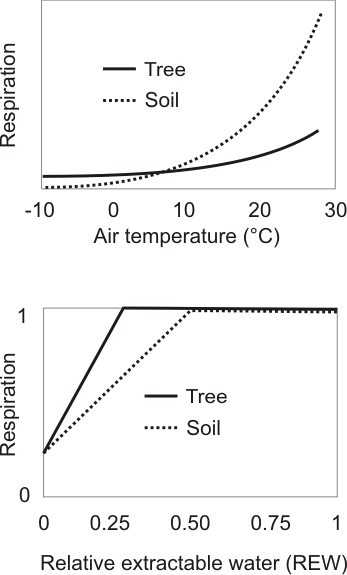Years of measurements have produced a lot of information on soil respiration. We know more or less how the respiration rate is related to changing environmental conditions, as plant respiration and soil respiration follows temperature exponentially. Approximately, respiration rates doubles for every 10°C increase in temperature. Soil water availability (REW) further regulates the respiration.
REW stands for “Relative Extractable Water”, and it refers to the amount of water in the soil available to plants and soil microfauna. Soil microbes that decompose soil organic matter function in soil water. In drying soil, the microbes have more difficulty accessing soil organic matter and the decomposition process gets slower. Root respiration also declines in very dry soil.
The effects of soil temperature and moisture can be expressed as a simple mathematical equation:
R = Max { 0 , f(REW) * r0 * q10T/10 – cr }
R stands for respiration expressed as the resulting carbon, r0 =1.1 µmol m–2 s–1, q10=2.4, cr=0.5 µmol m–2 s–1 and
f(REW) = Min { 1, Max { 0, (REW+drew) / REWcrit } }
where drew=0.1 and rewcrit=0.6.
For a more detailed description on soil processes and CO2 efflux from the ground, you can consult: Pumpanen, J., Ilvesniemi, H. and Hari, P. 2003. A process-based model for predicting soil carbon dioxide efflux and concentration. Soil Science Society of America.
